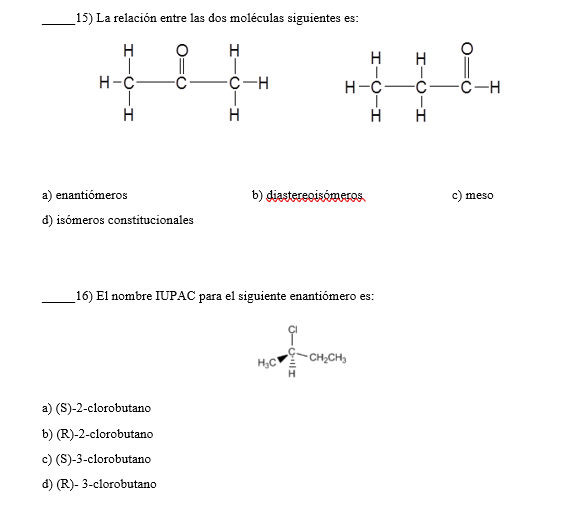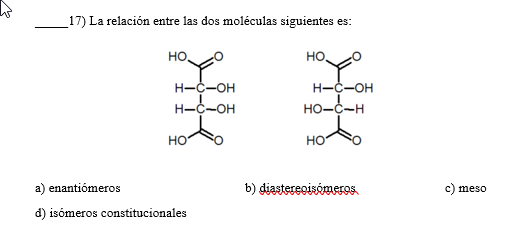¡Tu solución está lista!
Nuestra ayuda de expertos desglosó tu problema en una solución confiable y fácil de entender.
Mira la respuestaMira la respuesta done loadingPregunta: _____15) The relationship between the following two molecules is: a) enantiomers b) diastereoisomers c) meso d) constitutional isomers _____16) The IUPAC name for the following enantiomer is: a) (S)-2-chlorobutane b) (R)-2-chlorobutane c) (S)-3-chlorobutane d) (R)- 3-chlorobutane _____17) The relationship between the following two molecules is: a)
_____15) The relationship between the following two molecules is:
a) enantiomers b) diastereoisomers c) meso
d) constitutional isomers
_____16) The IUPAC name for the following enantiomer is:a) (S)-2-chlorobutane
b) (R)-2-chlorobutane
c) (S)-3-chlorobutane
d) (R)- 3-chlorobutane
_____17) The relationship between the following two molecules is:a) enantiomers b) diastereoisomers c) meso
d) constitutional isomers- Esta es la mejor manera de resolver el problema.Solución
If any doub…
Mira la respuesta completa
Texto de la transcripción de la imagen:
15) La relación entre las dos moléculas siguientes es: a) enantiómeros b) diastereoisómeros d) isómeros constitucionales 16) E1 nombre IUPAC para el siguiente enantiómero es: a) (S)-2-clorobutano b) (R)-2-clorobutano c) (S)-3-clorobutano d) (R)-3-clorobutano
17) La relación entre las dos moléculas siguientes es: a) enantiomeros b) diasteregisómeros d) isómeros constitucionales

Estudia mejor, ¡ahora en español!
Entiende todos los problemas con explicaciones al instante y pasos fáciles de aprender de la mano de expertos reales.

